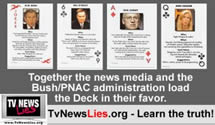Original article posted at ThomasPainesCorner.
 by Peter Singer
by Peter Singer
5/26/09
The eighteenth-century German philosopher Immanuel Kant wrote: “Two things fill the heart with ever renewed and increasing awe and reverence, the more often and more steadily we meditate upon them: the starry firmament above and the moral law within.”
This year, the 400th anniversary of Galileo’s first use of a telescope, has been declared the International Year of Astronomy, so this seems a good time to ponder Kant’s first source of “awe and reverence.” Indeed, the goal of the commemoration – to help the world’s citizens “rediscover their place in the universe” – now has the incidental benefit of distracting us from nasty things nearer to home, like swine flu and the global financial crisis.
What does astronomy tell us about “the starry firmament above”?
By expanding our grasp of the vastness of the universe, science has, if anything, increased the awe and reverence we feel when we look up on a starry night (assuming, that is, that we have got far enough away from air pollution and excessive street lighting to see the stars properly). But, at the same time, our greater knowledge surely forces us to acknowledge that our place in the universe is not particularly significant.
In his essay “Dreams and Facts,” the philosopher Bertrand Russell wrote that our entire Milky Way galaxy is a tiny fragment of the universe, and within this fragment our solar system is “an infinitesimal speck,” and within this speck “our planet is a microscopic dot.”
Today, we don’t need to rely on such verbal descriptions of our planet’s insignificance against the background of our galaxy. The astronomer Carl Sagan suggested that the Voyager space probe capture an image of earth as it reached the outer reaches of our solar system. It did so, in 1990, and Earth shows up in a grainy image as a pale blue dot. If you go to YouTube and search for “Carl Sagan – Pale Blue Dot,” you can see it, and hear Sagan himself telling us that we must cherish our world because everything humans have ever valued exists only on that pale blue dot.
That is a moving experience, but what should we learn from it?
Russell sometimes wrote as if the fact that we are a mere speck in a vast universe showed that we don’t really matter all that much: “On this dot, tiny lumps of impure carbon and water, of complicated structure, with somewhat unusual physical and chemical properties, crawl about for a few years, until they are dissolved again into the elements of which they are compounded.”
But no such nihilistic view of our existence follows from the size of our planetary home, and Russell himself was no nihilist. He thought that it was important to confront the fact of our insignificant place in the universe, because he did not want us to live under the illusory comfort of a belief that somehow the world had been created for our sake, and that we are under the benevolent care of an all-powerful creator. “Dreams and Facts” concludes with these stirring words: “No man is liberated from fear who dare not see his place in the world as it is; no man can achieve the greatness of which he is capable until he has allowed himself to see his own littleness.”
After World War II, when the world was divided into nuclear-armed camps threatening each other with mutual destruction, Russell did not take the view that our insignificance, when considered against the vastness of the universe, meant that the end of life on Earth did not matter. On the contrary, he made nuclear disarmament the chief focus of his political activity for the remainder of his life.
Sagan took a similar view. While seeing the Earth as a whole diminishes the importance of things like national boundaries that divide us, he said, it also “underscores our responsibility to deal more kindly with one another, and to preserve and cherish the pale blue dot, the only home we’ve ever known.” Al Gore used the “pale blue dot” image at the end of his film, An Inconvenient Truth, suggesting that if we wreck this planet, we have nowhere else to go.
That’s probably true, even though scientists are now discovering other planets outside our solar system. Perhaps one day we will find that we are not the only intelligent beings in the universe, and perhaps we will be able to discuss issues of interspecies ethics with such beings.
This brings us back to Kant’s other object of reverence and awe, the moral law within. What would beings with a completely different evolutionary origin from us – perhaps not even carbon-based life forms – think of our moral law?
© 2009 Project Syndicate
Peter Singer is a professor of bioethics at Princeton University. His 1975 book Animal Liberation was a touchstone for the animal rights movement. A selection of his many books include: Practical Ethics, How Are We To Live? Ethics in an Age of Self-Interest, One World: The Ethics of Globalization, The Ethics of What We Eat: Why Food Choice Matters, and The President of Good and Evil: Questioning The Ethics of George W. Bush. Singer’s most recent book, The Life You Can Save: Acting Now to End World Poverty, is now available.




 Julie Leyva recently submitted some questions to the North American Animal Liberation Press Office. Jason Miller wrote the reply.
Julie Leyva recently submitted some questions to the North American Animal Liberation Press Office. Jason Miller wrote the reply. By
By


























